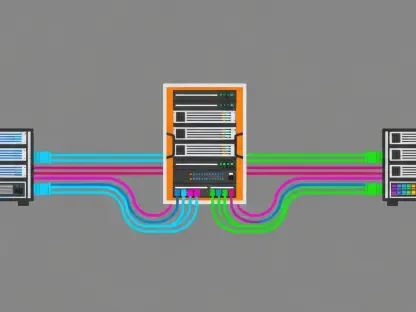Chloe Maraina is a leading expert in data science with a passion for transforming complex data into visually compelling narratives. Her expertise in business intelligence positions her uniquely to discuss the launch of medaptus’s new real-time Hospital Medicine Analytics solution, a tool designed to empower hospital medicine businesses by offering immediate access to crucial operational metrics. Let’s dive into our conversation to uncover the thought processes behind this innovation and its anticipated impact on healthcare dynamics.
Can you explain the main purpose of the Hospital Medicine Analytics solution?
The primary aim of the Hospital Medicine Analytics solution is to provide hospital medicine departments with real-time insights into their operational metrics. By leveraging automated data, it empowers these departments to make swift, informed decisions without the burden of manual data aggregation. This effectively enhances their ability to manage patient care, resource allocation, and overall efficiency.
How does the new tool differ from traditional methods of data aggregation in hospital medicine?
Traditional methods often involve cumbersome, manual efforts to collect and interpret data. Our new tool automates this process, delivering real-time data through an intuitive platform. This transition not only saves time but also minimizes errors, allowing teams to focus more on patient care and less on administrative tasks.
What role did the Ignite Customer Advisory Board play in the development of this tool?
The medaptus Ignite Customer Advisory Board was instrumental in shaping the analytics solution. They offered valuable insights into the most critical metrics for hospital medicine teams, ensuring that our tool addresses real-world needs and challenges faced within the industry.
Which hospital medicine leaders and organizations contributed to the creation of the Hospital Medicine Analytics solution?
We collaborated with leaders from esteemed organizations like Baptist Health Medical Group, University of Rochester – Highland Hospital, Valley Hospitalist Medical Group, and others. Their feedback and real-world insights were crucial in refining the tool’s functionality and relevance to day-to-day operations.
Could you elaborate on the four dashboards included in the initial release?
The initial release features four primary dashboards: AM Assignments Counts, Assigned Providers per Hospitalization, Admissions and Discharges, and Average Patients per Provider. Each of these dashboards offers centralized visibility, helping teams track provider workloads, census activity, and performance trends.
How do these dashboards help improve the performance and workload management for providers?
These dashboards empower providers by offering them a real-time view of their workloads and patient assignments. Such transparency aids in resource allocation, ensuring that patient loads are balanced and provider performance is evenly distributed, all of which supports efficient patient care.
What future updates are planned for the Hospital Medicine Analytics tool?
We’re planning updates that introduce additional dashboards. These will offer insights into hourly admission trends, efficiency of discharges, early discharges, 30-day readmission rates, and overall length of stay. Each of these will add layers of insight, further refining operational efficiency and patient care strategies.
How does the tool utilize real-time data to provide insights into hospitalist operations?
The Hospital Medicine Analytics tool capitalizes on real-time data from our platform’s automated patient assignment and Census Manager features. This provides an integrated view of ongoing operations, helping to assess and adapt to the constant changes seen in hospitalist settings without delays.
In what ways can hospital leaders benefit from real-time data for operational decision-making?
Real-time data allows leaders to quickly adjust provider assignments in response to fluctuations in patient census. It facilitates the analysis of performance metrics like discharge rates, helping to inform future strategies for staffing and resource allocation based on historical trends.
Can you describe how the interface of the solution enhances the user experience?
We designed the interface to be intuitive and user-friendly, ensuring easy navigation through a centralized view of provider metrics and patient volumes. This simplicity helps users to focus on critical data insights without getting lost in complex interfaces, thereby enhancing productivity and decision-making.
What are some specific challenges in hospital medicine that this tool aims to address?
The tool tackles several challenges, including fluctuating patient volumes, staffing inefficiencies, and the need for immediate visibility into departmental operations. By addressing these, the tool helps streamline resource management and improve patient care outcomes.
How does medaptus plan to support ongoing innovation and feedback for this tool?
Feedback is paramount to us. We continuously engage with our advisory board and user community to gather insights and suggestions. This iterative process ensures that our solution evolves to meet the shifting demands of hospital medicine, maintaining relevance and effectiveness.
How does the integration with the EHR, such as the system used by The Queen’s Health System, enhance the effectiveness of the tool?
The integration with electronic health records (EHR) systems like The Queen’s Health System’s Assign tool enhances the solution’s effectiveness by synchronizing real-time patient data. This seamless connection ensures that all team members have access to the same accurate data for informed decision-making.
What kind of impact do you foresee the Hospital Medicine Analytics solution having on patient care?
I believe this solution will significantly enhance patient care by reducing the time spent on manual data tasks, allowing healthcare providers to dedicate more attention to their patients. Its ability to optimize workloads and improve resource management ultimately leads to better patient outcomes.
Are there any particular success stories or feedback from early adopters you can share?
Early adopters have appreciated the tool’s ability to significantly cut down on administrative tasks and enhance decision-making efficiency. Some users noted improvements in resource allocation and a more equitable distribution of workloads, leading to less stress among staff and better patient care.
How does this new solution align with medaptus’s overall mission or vision for healthcare technology?
Our mission emphasizes improving healthcare efficiency and patient care through technology. This solution is a testament to that vision, providing a tool that not only enhances operational visibility but also empowers staff to deliver high-quality care, aligning seamlessly with our overarching goals.









